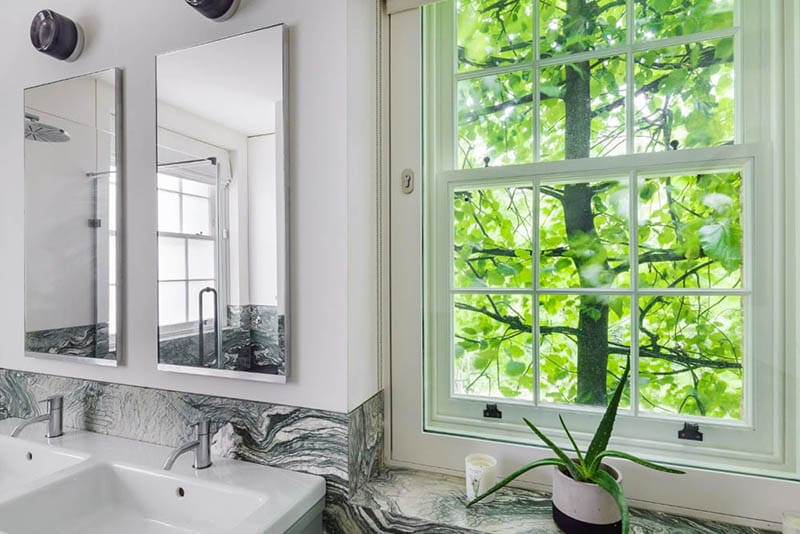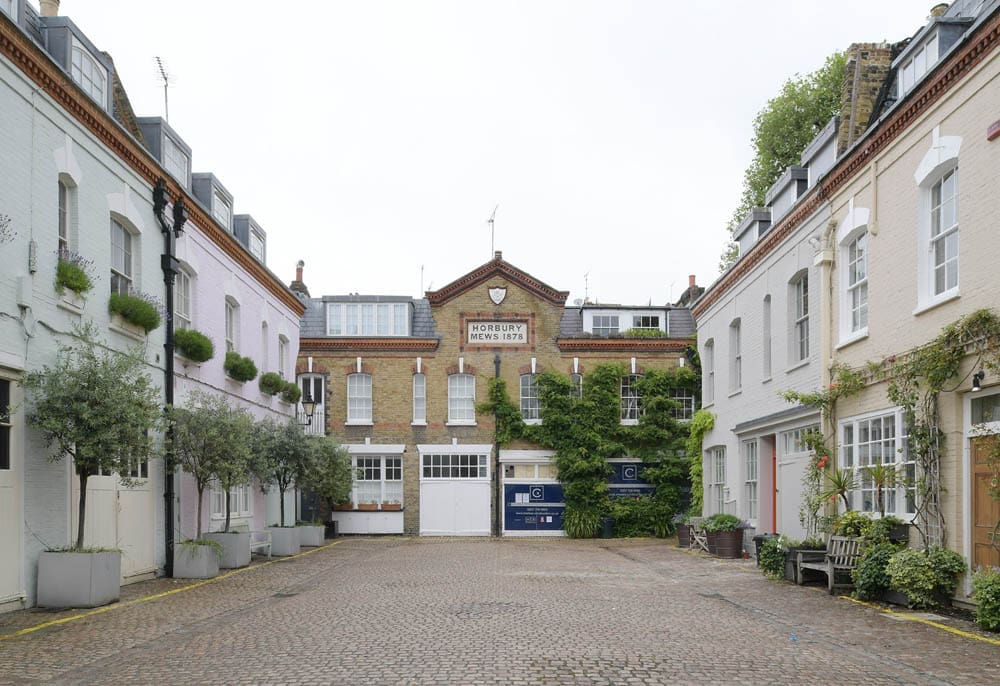
Retrofitting Historic Mews House Windows with LandVac Vacuum Glazing
Discover the energy-efficient transformation of Horbury Mews with vacuum-glazed heritage windows. A heritage retrofit success story.
Location: West London, Victorian Mews House
Objective: Retrofit a listed Victorian property with energy-efficient windows that preserve historical character and meet stringent conservation requirements.
Products Used: LandVac Vacuum Glass, integrated into Gowercroft Joinery’s Winston Sliding Sash Windows
Key Takeaways
- Energy Efficiency: LandVac vacuum glazing achieved an impressive U-value of 1.5 W/m²K, significantly reducing energy consumption.
- Conservation-Friendly Design: The vacuum glazing and timber frames preserved the original look while meeting planning and conservation approval.
- Carbon Reduction: A remarkable 82% energy consumption reduction, surpassing RIBA targets for new builds.
What Challenges Did the Victorian Mews House Present?
Constructed in 1878 as a carriage house, the Grade II listed property in a conservation area had undergone piecemeal residential conversions over the years. This left it with poorly heated, dark, and inefficient interiors, along with an exterior that failed to meet conservation standards.
The property required a complete retrofit that met the following goals:
- Reduce the building’s carbon footprint to better-than-new-build standards.
- Preserve its historic character for conservation approval.
- Improve energy efficiency and reduce draughts without compromising the aesthetic appeal of the original multi-pane sash windows.
Why Was Vacuum Glazing the Ideal Solution?
The architect, Prewett Bizley, needed windows that would combine cutting-edge energy performance with a traditional appearance. LandVac vacuum glazing paired with Gowercroft Joinery’s Winston Sliding Sash Windows provided the perfect solution:
- Ultra-Slim Profile: LandVac’s 8.3mm thickness fit seamlessly into the narrow sash frames, preserving the original appearance.
- Authentic Design: Traditional features such as glazing bars, fitch fasteners, and period ironmongery delivered an authentic aesthetic that convinced visitors the windows were original.
- Advanced Insulation: With a U-value of 1.5 W/m²K, the vacuum glazing offered modern thermal performance without the double reflection common in standard double glazing.
Robert Prewett, the architect, noted:
“Replacing sash windows was absolutely central to achieving our energy reduction strategy. Visitors are amazed that the windows look original and single glazed.’’
How Did Vacuum Glazing Improve Energy Efficiency?
The combination of LandVac vacuum glazing and Gowercroft’s high-performance timber frames resulted in exceptional energy performance:
- U-value of 1.5 W/m²K: Achieved through LandVac vacuum glazing, with future capabilities to reach 1.2 W/m²K.
- Air Tightness: The sealing system delivered an impressive air tightness of 1 m³/m²/hr at 50Pa, minimising draughts and energy loss.
- Energy Reduction: The property achieved an 82% reduction in energy consumption, lowering it from 325 to 51 kWh/m²/yr.
What Conservation Challenges Did the Project Overcome?
Securing planning approval in a conservation area required meeting strict guidelines to maintain the building’s historic appearance. LandVac vacuum glazing played a pivotal role:
- The glazing retained the traditional single-pane look while delivering modern energy performance.
- Its slim profile avoided the double reflection and visible glazing bars associated with standard double glazing.
- Original design elements, such as glazing bars and timber frames, were preserved and enhanced with advanced sealing systems.
Why Is Vacuum Glazing the Future of Heritage Retrofits?
The Mews House retrofit sets a benchmark for combining deep sustainability with conservation principles. LandVac vacuum glazing enabled the project to deliver modern energy efficiency while preserving the building’s historical character.
Key benefits of vacuum glazing for listed buildings include:
- Authenticity: Maintains the look and feel of original windows.
- Energy Savings: Dramatically reduces heating demand and energy costs.
- Planning Success: Meets the stringent requirements of conservation areas and listed buildings.
A Landmark in Heritage Sustainability
This Victorian mews house achieved remarkable results:
- A massive 82% energy reduction, surpassing RIBA targets for new builds.
- Improved insulation and air tightness while maintaining the original aesthetic.
- A precedent-setting example of how vacuum glazing can transform listed properties into low-energy, future-proofed homes.

Ready to Retrofit Your Historic Windows?
If you’re inspired by the success of the Mews House project, consider upgrading your listed building with LandVac vacuum glazing. Contact Vacuum Glazing UK today for a tailored quote and start your journey toward a more efficient, heritage-sensitive home.